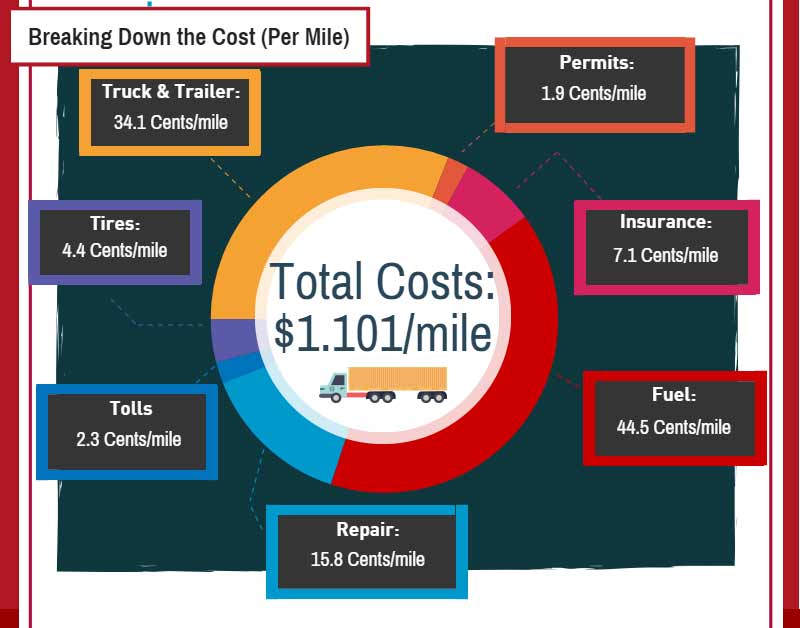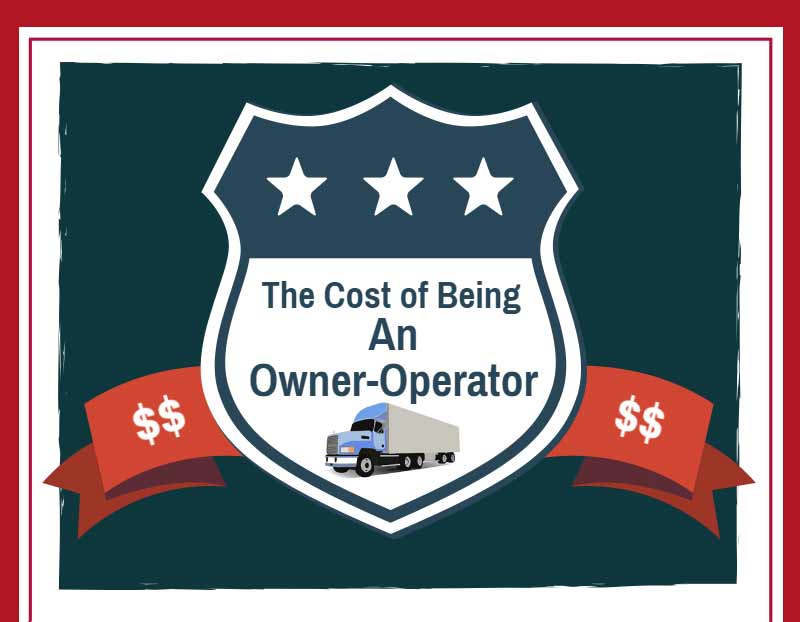
• A brief history of Owner Operators
• The cost of Owner Operator Turnover
• Six Tips on How To Find Owner Operator Truck Drivers
Americans fantasize and idealize two images in the world of business. One is the entrepreneur, the person who wants to be his or her own boss. The other image is one of exploring the great American landscapethe open road. One profession grabs both of these visions: The independent owner-operator. An independent owner-operator is free to make his or her own decisions and travel the open road.
In order to recruit owner operators, it is important to understand the many factors that influence their thoughts, opinions, and perceptions. Independent owner-operators are not competing in the same environment today as they were one-hundred years ago. Regulation and deregulation of the industry, technological advancements, and economic cycles have all influenced the independent owner-operators and they all have an impact on how to find owner operator truck drivers.
This act required the owner-operator to show the ICC that there was a shipper in need of its services and that current carriers were unable to meet this need. No longer would owning a truck and having the zeal be sufficient to be a motor carrier. This was the beginning of “regulation” on the industry. The purpose of this regulation was to control the quality and also the number of motor carriers. The effect on the Owner Operators was that, it made it very difficult if not impossible to grow their business from a one truck operation.
The comfort of the 1940s and 1950s for the independent owner-operators slowly gave way to a push for deregulation. Beginning in the 1960s, public opinion turned against big government and regulated industries. Under President Jimmy Carter in 1978, the ICC began de facto deregulation of the motor carrier industry. For the independent owner-operators, nothing had changed on paper. Congress had not passed any law deregulating trucking, and the courts had not made any decision deregulating trucking. However, the change in ideology by the ICC did lead to changes for the independent owner-operator. All of a sudden, the burden of proving that a motor carrier was “fit, willing and able to perform” services needed by the public was no longer a heavy burden
The term “deregulation” is used to describe the motor carrier industry since 1980, although some commentators suggested is not an entirely accurate term. While economic regulations were lifted, many regulations remained and have been strengthened since. In 1980, operating authority was deregulated, allowing carriers to operate anywhere they chose to. But beyond that change, ‘there’s still a tremendous amount of regulation’, including hazmat regulations as well as rules regarding commercial driver’s licenses. Then, there are the Hours of Service regulations, which are still being worked out. The many independent owner-operators remaining leased on or contracted to larger motor carriers face government challenges today. Just as the motor carrier must meet the safety requirements set forth by the FMCSA, 121 the independent owner-operator must adhere as well. The federal government and shippers stripped the independent status away from the owner-operators.
The transportation industry has changed and continues to change. It adapts to government regulations, technological advancements, political climate, economic cycles, and cultural evolutions. The independent owner operator is no different. The independent owner-operator has the equipment and the will to do the work. From trip-leasing to keep trucks rolling to shutting down equipment in objection to soaring fuel prices, the independent owner operator continues to find a way to keep the business moving. Regardless of the recent protectionist philosophy of government or the increased demands of shippers, the past 100 years of independent owner-operator evolution leads me to believe that entrepreneurial spirit will continue to live on in future independent owner-operators. Independent owner-operators have trucks, and they will drive. When recruiting owner operators, it is important to remember and be mindful of the many regulatory pressures they face as not only a truck driver but also an Entrepreneur.

The costs associated with owner-operator turnover vary from one company to another. Every trucking company view turnover costs differently, depending on what variables are measured. These include departure costs, replacement costs and training costs. The cost a carrier would incur for having one owner-operator leave can range from $3,500 up to $10,000 or more. Let’s look at some of the items that are associated with the cost of owner operator turnover.
When an Owner operator becomes unhappy with their position, the first response is usually NOT to quit. Instead the response to this dissatisfaction is a decrease in job motivation. The result is that they become less productive and less reliable. This is a dangerous time for the employer as there is a greater risk of damage to equipment. Additionally, there is also an increase in stress and conflict between the owner operator and dispatchers. This dissatisfaction has a direct effect on profit and services.
An independent contractor who knows your business and your operating process is easier to work with and will be more efficient. He knows how things work and he knows how to get the job done. A tremendous amount of value is lost when an owner operator leaves. An experienced owner operator uses fewer carrier resources. When a driver leaves, the investment that you have placed in the training and experience of that driver is lost.
When an owner operator decides to leave your company, the overhead of your business now needs to be supported by fewer owner operators on the road. Typically, expenses such as rent, benefits, utilities and other fixed cost do not go down when an owner operator leaves. These expenses now need to be supported with fewer trucks moving, which will lead to less revenue. Margins suffer; this is especially true if you have a higher trailer to tractor ratio in your fleet.
When the contractor leaves, you are not able to service your customers. As a result, revenue is not generated and the contribution of that driver to profit for the company is lost. If the truck that left grossed $15,000 a month with a margin of seven percent that is a profit of $1,050. A monthly bottom line profit that is gone until the driver is replaced.
In addition, it is often hard to maintain the demands of customers once you see a reduction in your capacity. As a result, you will see shippers send more and more of their business to one of your competitors. The financial impact of not being able to meet the needs of your customer can be significant. Fractured relationships with customers can take a long time to fix and sometime they are lost forever.
The cost required to replace a driver are often under estimated. You need to take into account the cost of advertising, background checks, and drug screening. However, there are also administrative cost such as labor hours to process applications, check references and interview candidates. Once you successfully recruit a new owner operator, there are additional costs in training the new drivers such as lost production time during training and training materials

Often a new driver will be given less miles until they prove themselves. Efficiency is also lower during the training period as a new contractor learns company policy and procedures. There are often more cargo claims and customer service issues with new hires. That is why new owner operators are not entrusted with the best customer during the training period. The result is higher administrative cost and more demands on your resources.
One of the most overlooked aspects of Owner Operator recruiting is the financial cost incurred by the owner operator themselves. The associated cost of switching carriers is often the number one factor considered before making a change. These cost are often difficult and sometimes impossible for the owner operator to overcome.
It usually takes on average three weeks for an owner operator to get switched over to a new carrier. During that time, the owner operator still has to pay the tractor payment and insurance. When you factor in the lost revenue of not moving those weeks, base plates and escrow the average financial impact on an owner operator willing to make a change is about five to six thousand dollars.
Remember there is a monetary cost from the owner operators when making a decision to switch carriers. Also remember from our earlier discussion that owner operators tend to have a strong entrepreneur spirit. Recognize this and focus on it in your brand messaging and advertising efforts. Sometimes simply raising your sign-on bonus or offering higher pay is not the best solution.
It will be quite confusing to have a particular message during the initial advertising and then something different during a phone conversation and then something different at orientation. It also builds distrust. This is why it is important that all of your communication is unified. Develop a strong recruiting message and offer. Then give it enough time to start working. And don’t panic if it doesn’t generate immediate results. Panicking and changing the message is bound to make things worse.
People access information differently. Some owner operators will be active in online chat rooms, other will spend time looking at online job boards. Still others will access information from twitter or Facebook. There is probably at least one owner operator out there that will stop and pick up a flyer in a truck stop.
When trying to find a good answer on how to find owner operator truck drivers it can be difficult to justify the budget sometimes needed to reach owner operators but it is important to also consider the cost of not being effective in keeping your positions filled. One of the ways to consider offsetting this cost is by partnering with a company that specializes in owner operator recruiting. For example, take a look at our driver recruiting service. By leveraging the buying power of several hundred carriers we are able to get significant discounts and pass them on to you. The other advantage is that we are running ads constantly. This allows you to take advantage of our recruiting efforts without the long lead time.
Not every company will be right for every owner operator. First have a conversation and see if there is a good match. There is no need to try to make your opportunity sound better than it is. If you try to please the wrong driver, he won’t like it and you will end up losing the driver. This will also hurt your reputation in the driving community making it harder for you to recruit in the future.
Recruiting owner operators is like any other cycle and it takes time. It is not realistic to have a goal of hiring a driver on the first call. It requires having an ongoing conversation. Considering the finical risk to the owner operator of making a change, we would encourage you to have caution with any candidate that is eager to get started too quickly. Sometimes this is an indicator that there may be an issue that needs to be explored.